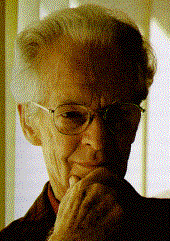| Directed Instruction Theoretical
foundation
|
Skinner's Behaviorist Theories of Learning: Building on the S-R Connection Skinner: Grandfather of behaviorism, the most influential psychologist of the 20th century. Skinner believed "behavior is more controlled by the consequence of actions than by events preceding the actions." (Stimulus-Response) He found that human behavior could be shaped by "contingencies of reinforcement" or situations in which reinforcement for a learner is made contingent on a desired response. He identified three kinds of situations that can shape behavior: 1. Positive reinforcement. A situation is set up so that an increase in a desired behavior will result from a stimulus. For example, to earn praise or good grades (positive reinforcement), a learner studies hard for a test more often (desired behavior). 2. Negative reinforcement. A situation is set up so that an increase in a desired behavior will result from avoiding or removing a stimulus. For example, a student dislikes going detention (negative reinforcement), so to avoid to detention again, the student is quiet in class more often. 3. Punishment. A situation is set up so that a decrease in a desired behavior will result from undesirable consequences, such as when a student is given a failing grade (punishment) when she cheats on a test (undesired behavior), so she is less likely to cheat in the future. |
 Theoretical
foundation-skinner
Theoretical
foundation-skinner